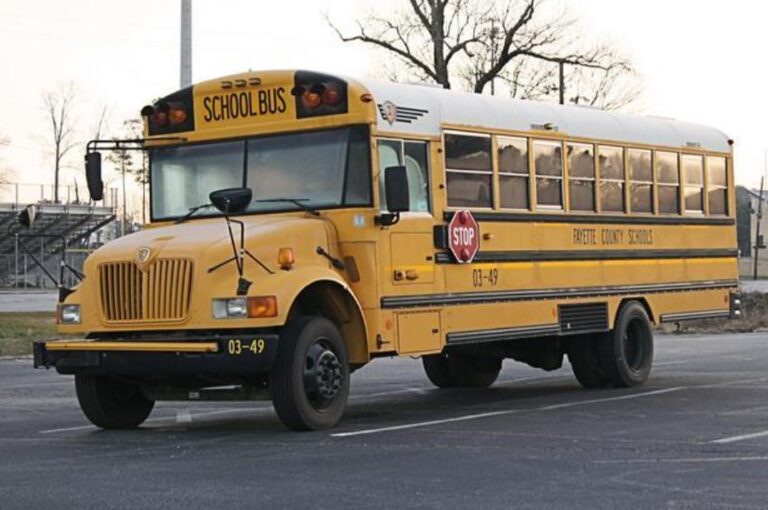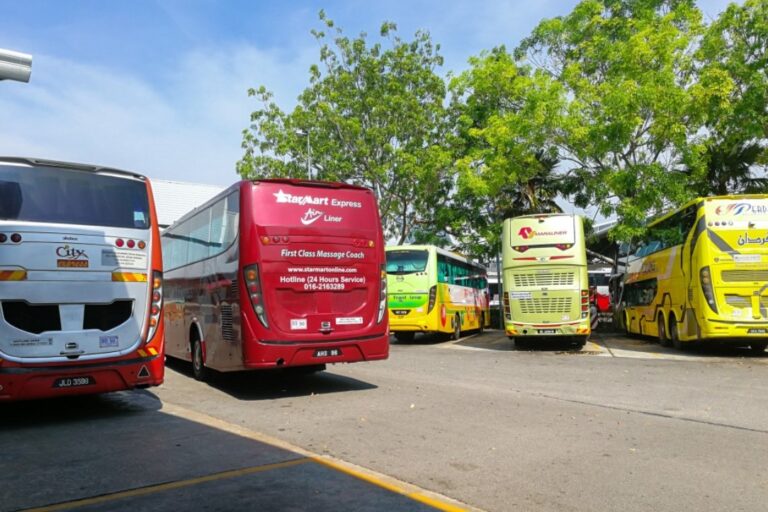How To Convert A Bus Into A Home? A Complete Breakdown
This article will explain How To Convert A Bus Into A Home? This intriguing concept has gained popularity among those seeking a unique, mobile living space. Converting a bus into a home is not just about creating a living area; it’s about crafting a personal, functional, and mobile abode. This comprehensive guide dives into the key aspects of this transformation, offering practical advice and creative ideas to help you turn a bus into your dream home.
Key Takeaways
- Assessing and choosing the right bus for conversion.
- Understanding legal requirements and safety standards.
- Planning and designing your bus home layout.
- Essential steps in the conversion process.
- Decorating and personalizing your mobile home.
How To Convert A Bus Into A Home?
Converting a bus into a home is a multi-step process that requires planning, skill, creativity, and dedication. Here’s a detailed breakdown of each step involved in this transformation:

1. Selecting and Purchasing the Right Bus
- Research: Understand different bus types (school buses, city buses, coaches) and their respective pros and cons.
- Inspection: Examine the bus’s mechanical condition, including engine, transmission, rust, and tires.
- Purchase: Buy a bus that fits your needs and budget. Remember, larger buses offer more space but can be more challenging to drive and park.
2. Designing Your Layout
- Plan: Sketch a layout or use 3D design software. Consider space for a bedroom, kitchen, bathroom, and living area.
- Measurements: Accurately measure the interior to ensure your design fits the physical space.
- Legal Requirements: Ensure your layout meets any legal requirements for a livable space.
3. Stripping and Cleaning the Bus
- Interior Removal: Take out the existing seats, flooring, and any other fixtures.
- Cleaning: Thoroughly clean the bus interior, focusing on areas that will be difficult to reach later.
4. Insulating the Bus
- Materials: Choose insulation materials suited for your climate (spray foam, rigid foam boards, etc.).
- Application: Insulate walls, ceiling, and floor to maintain comfortable temperatures inside the bus.
5. Electrical and Plumbing Installation
- Electrical System: Plan your electrical layout, including outlets, lights, and appliances. Consider hiring a professional for safety.
- Plumbing System: Install plumbing for the kitchen and bathroom. This includes freshwater and waste systems.
6. Interior Building and Installation
- Framing: Build a frame for walls, ceilings, and built-in furniture.
- Walls and Ceiling: Install wall and ceiling panels.
- Furniture: Build or install furniture like beds, seats, and storage. Consider multi-functional furniture for space efficiency.
7. Installing Windows and Doors
- Windows: Replace or modify existing windows for insulation and aesthetics.
- Doors: Install a secure main door, and consider adding screen doors for ventilation.
8. Setting Up Kitchen and Bathroom
- Kitchen: Install countertops, cabinets, a sink, and appliances.
- Bathroom: Set up a toilet, shower, and sink. Consider space-saving designs.
9. Heating, Ventilation, and Air Conditioning (HVAC)
- Heating: Install a heating system suitable for your climate (wood stove, propane heater, etc.).
- Cooling: Set up air conditioning or fans for warmer climates.
- Ventilation: Ensure good air circulation to prevent moisture build-up.
10. Finishing Touches and Decoration
- Painting and Decorating: Paint the interior and exterior. Decorate to reflect your style.
- Textiles: Add curtains, cushions, and rugs for comfort and warmth.
11. Legalities and Insurance
- Reclassification: Have the bus reclassified as an RV if necessary.
- Insurance: Obtain appropriate insurance for your mobile home.
- Registration: Ensure the vehicle is legally registered and meets all road safety standards.
12. Testing and Tweaking
- Trial Run: Take a short trip to test all systems.
- Adjustments: Make any necessary adjustments to improve functionality and comfort.
13. Continuous Maintenance
- Regular Checks: Regularly maintain the vehicle and living space, focusing on mechanical, electrical, and plumbing systems.
- Updates and Repairs: Address wear and tear or any functional issues promptly.
This conversion process is both challenging and rewarding, turning a conventional vehicle into a personalized, mobile living space. Each step demands careful consideration and execution.
While some steps can be DIY, others might require professional assistance, especially for electrical and plumbing work. The key to a successful bus-to-home conversion lies in meticulous planning, creativity, and a commitment to seeing the project through to completion.
Can You Turn A Bus Into A Home?
Yes, you can turn a bus into a home. This process, often referred to as a bus conversion or “Skoolie” conversion when using a school bus, involves transforming a regular bus into a livable space with all the essential amenities of a home.
The conversion process includes installing insulation, electricity, plumbing, heating, and cooling systems, as well as customizing the interior with a kitchen, bathroom, sleeping area, and living space.

The key to a successful bus-to-home conversion lies in careful planning, an understanding of the legal requirements, and a commitment to the process. While challenging, it offers a unique and personalized living experience.
Is Converting A Bus Worth It?
Whether converting a bus is worth it depends on personal goals, lifestyle preferences, and willingness to invest time and resources into the project.
For many, the appeal lies in the ability to create a custom, mobile living space that aligns with their values, like minimalism or sustainable living. Financially, it can be a cost-effective alternative to traditional housing, especially considering the rising costs of real estate.

However, it’s important to weigh the initial investment in purchasing and converting the bus, ongoing maintenance costs, and the challenges of living in a smaller, mobile space.
For those passionate about a DIY lifestyle and desiring a sense of freedom and adventure, bus conversion can be an incredibly rewarding endeavor.
Can You Convert A School Bus Into An RV?
Yes, you can convert a school bus into an RV, a process often termed as creating a “Skoolie.” This involves extensive modifications to transform the school bus into a recreational vehicle (RV) that’s equipped with living essentials like a sleeping area, kitchen, bathroom, and storage.
The process requires a good understanding of carpentry, electrical, and plumbing systems, or the hiring of professionals to handle these aspects. The converted bus must meet the legal requirements for an RV, which vary by region but generally include having sleeping, cooking, and bathroom facilities.
Once completed, the bus needs to be registered as an RV, which can affect insurance and licensing requirements. This conversion allows for a highly personalized and potentially cost-effective RV tailored to individual needs and tastes.
Conclusion
Converting a bus into a home is a fulfilling journey that blends creativity, practicality, and adventure. From selecting the right bus to adding personal touches, each step requires careful consideration and planning.
Embrace this unique opportunity to create a home that truly reflects your personality and lifestyle. Remember, how to convert a bus into a home is not just a question of construction; it’s about building a life on wheels. Boldly embark on this transformative journey, and let your mobile home be a testament to your ingenuity and vision.
Top FAQ’s
What are some common challenges in converting a bus into a home?
Common challenges include underestimating the time and cost, difficulty in finding suitable parking and living locations, learning specialized skills for electrical and plumbing work, and complying with legal and insurance requirements. Research and planning are key to overcoming these challenges.
How do I deal with heating and cooling in my bus home?
For heating, wood stoves, propane heaters, or portable electric heaters are popular choices. For cooling, roof-mounted air conditioners, evaporative coolers, or simply using fans and natural ventilation can be effective, depending on the climate.
Can I install regular household appliances in my bus home?
Yes, but it’s important to consider the power usage and size of regular household appliances. Space-saving and energy-efficient appliances designed for RVs are often more suitable for a bus conversion.
How do I ensure my converted bus is energy-efficient?
To ensure energy efficiency, use LED lighting, and energy-efficient appliances, and consider installing solar panels for electricity. Proper insulation is also key to maintaining temperature without excessive energy use.

Welcome to the exhilarating world of Matt Rex, a professional car racer turned renowned vehicle enthusiast. Immerse yourself in his captivating blog as he shares heart-pounding adventures, expert reviews, and valuable insights on cars, trucks, jets, and more. Fuel your passion for speed and discover the beauty of vehicles through Matt’s engaging stories and meticulous expertise. Join the ever-growing community of enthusiasts who find inspiration and expert advice in Matt Rex’s blog—a digital hub where the thrill of speed meets the pursuit of knowledge.







